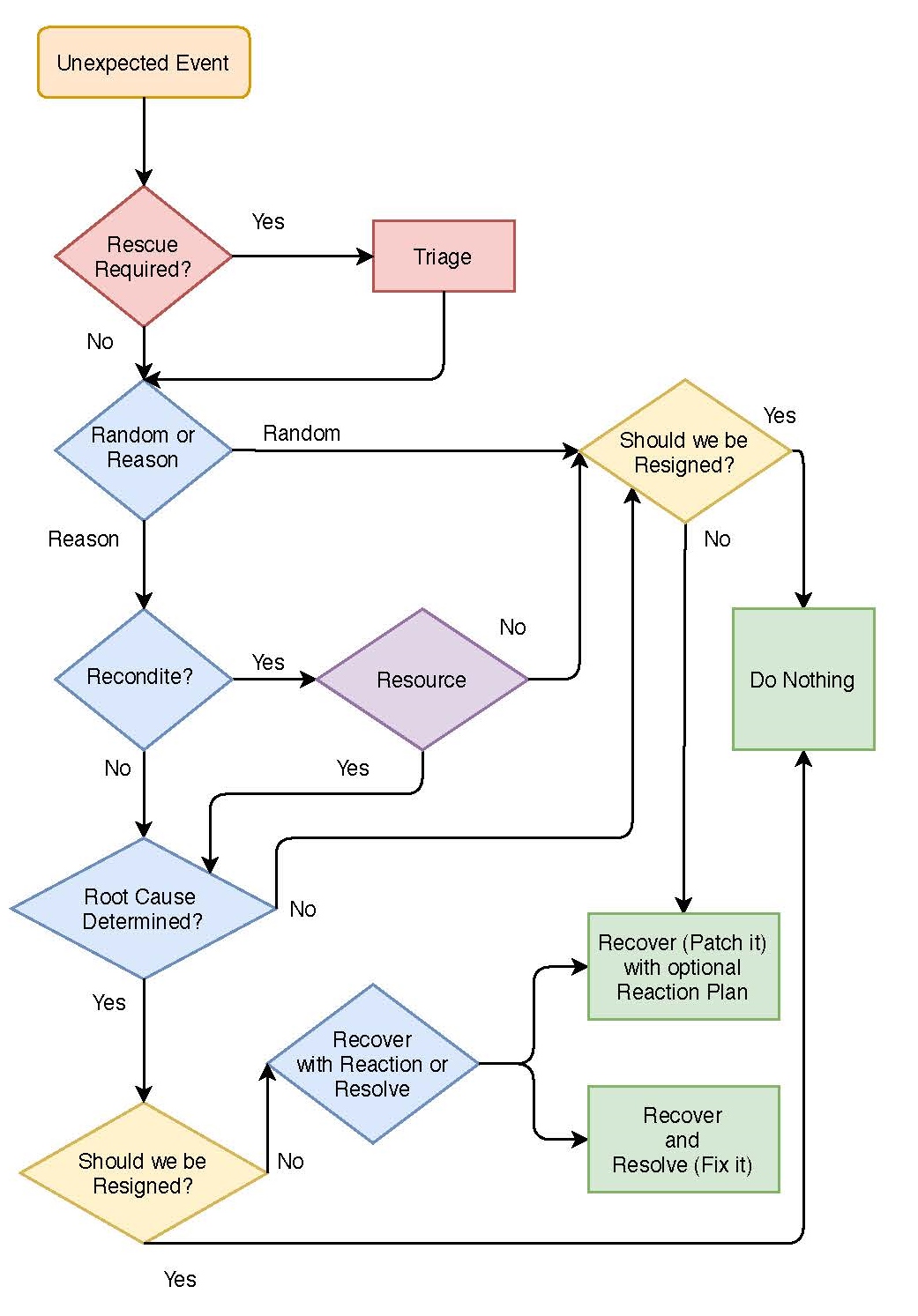
Things happen in the world we live in
; good things, bad things and everything in between.† We call these things, ďeventsĒ.† It rains, we fall down, we get bills in the mail, customers call us, we eat, we get a raise, we get sick, we stub our toe.† †Events are occurring all the time.†† We plan for events that we expect to happen.† We have contingency plans for events that we expect might happen, such as disaster plans.† We buy insurance against these events, and while there is sometimes no way to predict when or if they will happen, we know that they sometimes do, so we can plan for them.
†
When an event occurs that you donít expect, we call that an Unexpected event
.† We normally donít have a plan to accommodate an unexpected event because itís, well, unexpected.†
†
While you cannot plan for every eventuality,
you can put in place a methodology, a framework, to evaluate unexpected events so that you have a strategy to think about how you should
React
.† We call this the
"R"
Plan.
†
Here's a Framework diagram
that can guide you through a discussion about what to do when an unexpected event occurs.† The definitions of all the "R"s are below the diagram.
Rescue Required
– Does something have to be done immediately. A pipe bursts, someone is choking, a critical network goes down. You must triage the problem and stabilize things, so that you have the time to consider the next steps..
Random
- An event that happens and there is no way to predict it, avoid it, make it happen or make it not happen. It may never happen again, but it might. A pipe springs a leak. Someone drops a glass. Your power goes out for two seconds. A meteor comes close to hitting your house.
Reason
. If it’s not a Random event, then there must be a Reason. There is a calculable relationship between a cause and an event. The cause is the reason why something happened. While it may be hard to find the reason, and maybe even impossible given the time, budget and resource, the reason does exist.
Resigned
is deciding not to think or do anything about it. You are resigned to accept the result. We follow laws, rules, regulations, and more. We can lobby for a change, get involved to change things, or choose not to. Red light – you stop. Green light – you go. I’m resigned to follow that rule and not even think about it. Nothing necessarily wrong being Resigned to accept a result, but make it a conscious decision. We call this Ignoring It.
Recondite
means that it is incredibly difficult or impossible for oneself to understand or comprehend. There are some things that happen that require a level of knowledge and understanding that one cannot, at this time, comprehend.
Resource
is a subject matter expert, or contractor, or research you can do, that can be used to overcome Recondite. When we have a medical issue, we seek help from a medical professional because we are Recondite in that field.
Root Cause
– This is the initial cause, i.e. reason, that eventually resulted in the event. If my computer is slow, there may be many causes such as a program running in the background, slow internet, low memory, etc. After investigating you find a virus on the computer causing all of that. It’s the Root Cause.
Recover
– Actions that can be taken to recover from an event allowing one to proceed. These may often be short term fixes, band aids, and duct tape fixes. Sometimes we call this a Patch.
Reaction Plan
– If you Recover from an event, but can’t or don’t fix the root cause, then the event might happen again. This is the plan to react if the event happens again. This gets added to all your other plans for expected and possible events.
Resolve
– Actions that can be taken that will address the Root Cause so that the event doesn’t happen again. We call this a Fix. This permanently fixes and solves the problem.
The Takeaway:
While you canít plan for every event that can happen, you can have a framework in place to discuss and evaluate the event and make a critical thinking determination to patch it, fix it or ignore it.
